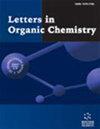使用不锈钢电极的电-芬顿工艺处理活性橙 16 染料废水:统计优化和运行分析
IF 1
4区 化学
Q4 CHEMISTRY, ORGANIC
引用次数: 0
摘要
:在当前工作中,研究了基于电-芬顿(EF)的活性橙 16(RO16)染料处理,并使用中心复合(CC)和田口设计(TD)统计优化工具进行了比较。针对 pH 值(A)、电解时间(B)、初始染料浓度(C)和电流密度(D)的影响,选择了颜色去除率(RC)和 COD 降解率(RCOD)作为响应。实验过程采用了面心 CC 设计和 L16 正交阵列。在最佳条件下,CC 和 TD 的判定系数 (R2) 分别为 0.99 和 0.97,表明统计意义显著,模型一致性良好。方差分析结果和 Prob.田口方法被认为是一种合适的方法,可以用较少的实验次数来计算参数百分比。此外,信噪比图表被证明是一种成功的 CC 设计替代方法。研究发现,电流密度和 pH 值是影响 EF 过程的最重要因素。出水污泥中较高的生物降解性(BOD5/COD)和最低的铁浓度(0.45 mg/L)证明了良好的环境处置适宜性。最后,还研究了各种抑制剂/清除剂(SO4 -2、PO4 -3、乙二胺四乙酸等)对 EF 工艺性能的影响。本文章由计算机程序翻译,如有差异,请以英文原文为准。
Treatment of Reactive Orange 16 Dye-Bearing Wastewater by Electro-Fenton Process with Stainless-Steel Electrodes: Statistical Optimization and Operational Analysis
: In the current work, the Electro-Fenton (EF) based Reactive Orange 16 (RO16) dye treatment was studied and compared with central composite (CC) and Taguchi design (TD) statistical optimization tools. Color removal (RC) and COD decay (RCOD) were chosen responses for the effect of pH (A), electrolysis time (B), initial dye concentration (C), and current density (D). The facecentred CC design and L16 orthogonal array were used in the experimental procedures. At optimal conditions, the coefficient of determination (R2) values of 0.99 for CC and 0.97 for TD suggest statistical significance and good model agreement. The results of the ANOVA and Prob. > F values supported the model’s successful experimental data fitting. Taguchi method was found as an appropriate methodology for parameter percentage contributions with fewer experimental runs. Moreover, the S/N ratio charts proved to be a successful CC design replacement. The current density and pH were found to be the most important factors for the EF process. A higher biodegradability (BOD5/COD) and minimum iron concentration (0.45 mg/L) in the effluent sludge demonstrated good environmental disposal suitability. In the last, the effect of various inhibitors/scavengers (SO4 −2, PO4 −3, EDTA, etc.) on the EF process performance was also carried out.
求助全文
通过发布文献求助,成功后即可免费获取论文全文。
去求助
来源期刊

Letters in Organic Chemistry
化学-有机化学
CiteScore
1.30
自引率
12.50%
发文量
135
审稿时长
7 months
期刊介绍:
Aims & Scope
Letters in Organic Chemistry publishes original letters (short articles), research articles, mini-reviews and thematic issues based on mini-reviews and short articles, in all areas of organic chemistry including synthesis, bioorganic, medicinal, natural products, organometallic, supramolecular, molecular recognition and physical organic chemistry. The emphasis is to publish quality papers rapidly by taking full advantage of latest technology for both submission and review of the manuscripts.
The journal is an essential reading for all organic chemists belonging to both academia and industry.
 求助内容:
求助内容: 应助结果提醒方式:
应助结果提醒方式:


